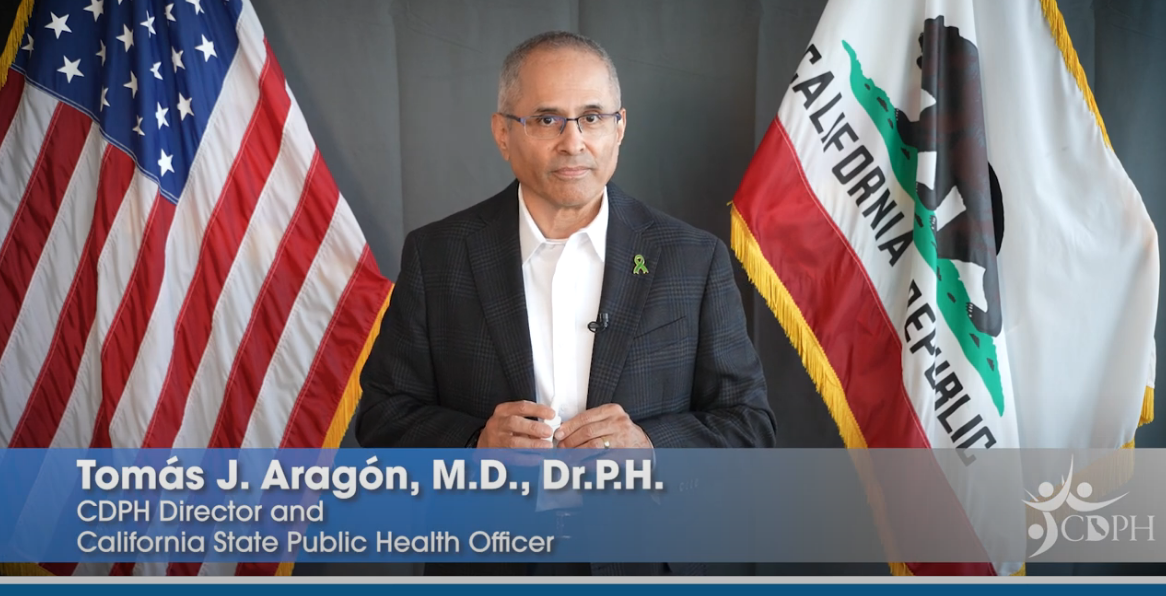California Launches “Facts Fight Fentanyl” Campaign to Combat Overdoses and Save Lives
August 28, 2024
NR24-021
Contact: media@cdph.ca.gov
New statewide initiative will raise awareness around dangers of fentanyl and equip Californians with lifesaving information
What You Need To Know: CDPH has launched “Facts Fight Fentanyl,” a statewide campaign to educate Californians on the dangers of fentanyl and how to prevent overdoses and deaths. This effort will provide critical information about fentanyl and life-saving tools such as naloxone.
Sacramento – The California Department of Public Health (CDPH) on Wednesday announced the launch of “Facts Fight Fentanyl,” a new statewide public education campaign to ensure Californians know the dangers of fentanyl and have the information they need to prevent overdoses and save lives.
“Facts Fight Fentanyl” will provide Californians with critical information about fentanyl and life-saving tools such as naloxone. The campaign will continue through June 2025.
“The goal of ‘Facts Fight Fentanyl’ is to ensure Californians know the dangers of fentanyl and how to prevent an overdose with the lifesaving medication naloxone,” said Dr. Tomás J. Aragón, CDPH Director and State Public Health Officer. “We all want to live in a California free of the harms of fentanyl. When we all have the facts on fentanyl, we can combat this crisis and work together to build safer, healthier communities.”
Why This Matters: In California, drug overdose is now the leading cause of death among 25- to 54-year-olds. In 2022, California saw more than 7,000 overdose deaths related to opioids – of those deaths, 87 percent involved fentanyl. An amount of fentanyl as small as a few grains of salt is enough to be deadly, yet many Californians are unaware of the dangers of fentanyl until it is too late. “Facts Fight Fentanyl” seeks to provide Californians with information to combat and prevent fentanyl-related overdoses.

What California Is Doing: “Facts Fight Fentanyl” is part of CDPH’s Overdose Prevention Initiative, which collects and shares data on fatal and non-fatal drug-related overdoses, drug-related overdose risk factors, prescriptions, and substance use. The Overdose Prevention Initiative supports substance-use prevention programs through evidence-based tools and strategies, public awareness and education, and promoting safe and effective prescribing and treatment practices throughout the state.
“Facts Fight Fentanyl” builds on an earlier campaign launched last year to break down the stigma of addiction and increase awareness around the accessibility of treatment. Unshame CA, a collaboration between the California Department of Health Care Services (DHCS) and Shatterproof, works to develop an understanding of substance use disorder as a treatable medical condition.
The Overdose Prevention Initiative supports California's implementation of the Campus Opioid Safety Act – effective January 2023 – which aims to reduce opioid-related overdoses and deaths through public colleges and universities by providing life-saving education, information, and federally approved opioid overdose reversal medication on campus, like naloxone.
In 2023, the US Food and Drug Administration (FDA) approved an over-the-counter (OTC) naloxone nasal spray which could be purchased directly by consumers in places like drug stores, grocery stores and gas stations, as well as online. But to address the potentially prohibitive cost, California’s
CalRX® Naloxone Access Initiative secured OTC nasal spray for a reduced price of $24 per twin-pack – and passes along that transparent, cost-efficient price to qualifying governmental and business entities.
Qualifying entities can also obtain free naloxone through California's Naloxone Distribution Project (NDP), which was created in 2018 to combat opioid -overdose related deaths throughout California. The NDP has distributed more than 4,829,500 kits of naloxone, which have been used to reverse more than 290,000 overdoses.
About The Campaign: The campaign includes educational materials in English, Spanish, Chinese and Korean across a multitude of communication platforms, including social media, radio, television, and outdoor advertising such as billboards and bus stops. To view examples of these materials, visit
Facts Fight Fentanyl Campaign.
The “Facts Fight Fentanyl” campaign also engaged with partner Tribal organizations during the development of the campaign. Efforts to engage Tribal communities is a key element on the campaign and include prioritizing preferred streaming platforms, focusing ad placements in Native American community health center screens, and pitching specifically to news outlets that reach Native American communities.
As part of the campaign, CDPH has also launched a new website, FactsFightFentanyl.org, to ensure Californians can easily access resources and information related to fentanyl. FactsFightFentanyl.org includes an interactive map showing where Californians can access naloxone for free or for purchase in their communities.
Campaign Materials:
Video of today's press briefing to announce the campaign.
Bigger Picture: CDPH’s efforts are one facet of Governor Newsom's approach to combating the opioid crisis, as outlined in his March 2023 Master Plan for Tackling the Fentanyl and Opioid Crisis (PDF). In addition to efforts to prevent and support substance abuse and addiction, CDPH has also focused on educating Californians on the dangers of opioids as well as promoting the use of life-saving naloxone and encouraging the use of test strips to identify the presence of fentanyl. For more information on California’s efforts to combat the opioid crisis, visit opioids.ca.gov.
Additional overdose data is available on the California Overdose Surveillance Dashboard.